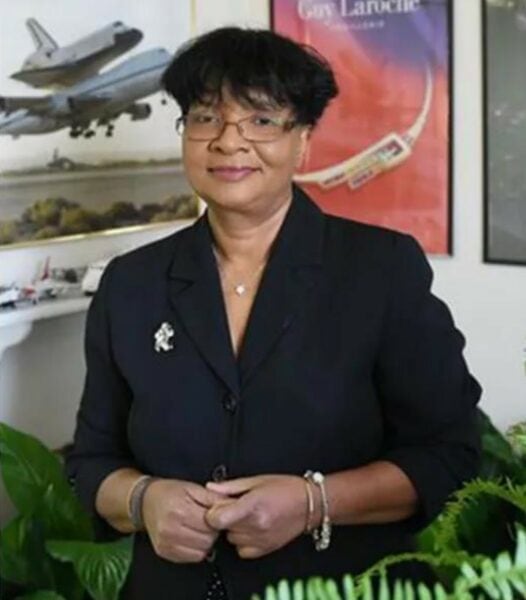Damayanthie Eluwawalage is an assistant professor at Delaware State University. She lives in Reading, Pennsylvania, and has been a member since 2009.

Website: https://www.exploro-historia.com
Alma mater/s: BA (cross-institutional studies—product design/industrial design/design/history), Curtin University of Technology, Australia, 1998; BA (interdisciplinary—design/history), First Class Honours, Curtin University of Technology, Australia, 1999; PhD (interdisciplinary—design/history), Edith Cowan University, Australia, 2005
Fields of interest: costume history, theory/philosophy (design/history), design (industrial/product/fashion)
Describe your career path. What led you to where you are today?
I am a professional historian from Australia who specializes in costume history. Just after I received my PhD in design and history, I was appointed as an assistant professor at Missouri State University, and it led to where I am today as a historian, a researcher, an author, a professor, and a private pilot.
What do you like the most about where you live and work?
I reside in Reading, Pennsylvania, and work in Dover, Delaware. I love the diverse culture and unique traditions in beautiful Pennsylvania. I cherish my students, colleagues, and pleasant working conditions at Delaware State University.
What projects are you currently working on?
History of costume: the consumption and governance of attire in the Mid-Atlantic region, United States (1600–1900); research on space suits and its development from Mercury Project to shuttle program; researching space suit design concepts/theories and applications; history of aviation/pilot attire; space missions and the human cost: historical and sociological research; emerging technologies in 3D body scanning and printing: an exploration of the potential for a new apparel industry and (general) aviation industry paradigm; fashion/aesthetics theory: an interdisciplinary approach
Have your interests evolved since graduation? If so, how?
My interests have evolved immensely since my graduation, as I have incorporated design, history, space, aviation, theory, and philosophy into interdisciplinary studies/research.
What’s the most fascinating thing you’ve ever found at the archives or while doing research?
Fascinating information on a “Brief History of Correctional Attire 1700–1889” in Crime and Punishment: Prisons: British Parliamentary Papers 1878–1889 (Irish Univ. Press Series).
Is there an article, book, movie, blog etc. that you could recommend to fellow AHA members?
The Theory of the Leisure Class by Thorstein Veblen (Unwin Books, 1899).
What do you value most about the history discipline?
As a costume historian, I value theories/philosophies of aesthetics, design, costume, and appearance. According to my comprehension, the narrative of clothing portrays the human affairs of human society, such as social divisions, social attitudes, social behavior, and social desires, perhaps more than any other scholarship. Researching social history can be likened to a jigsaw puzzle with many distorted pieces which mainly result from the absence of or restriction to related information. It also results from what has survived and what is available. A complete understanding of the social history in any given society in any historical milieu therefore requires the contribution of many disciplines. Clothes also represent an art form ascending out of a particular period and environment, as costume and, its application and meaning, has varied with each period. Differences in fashion theories also reflect different eras. For example, 19th-century theorists, such as Veblen and Simmel, regarded differentiation and stratification as essential preconditions of fashion, whilst 20th-century theorist Herbert Blumer regards fashion as an expression of collective behavior, that is, the fashion mechanism appears not in response to a need for class differentiation and class emulation, but in response to a wish to be in fashion.
Why is membership in the AHA important to you?
As its mission statement declares, the AHA is important to me as it provides guidance for the discipline by protecting academic freedom, developing professional standards, supporting scholarship and innovative teaching, and helping to sustain and enhance the work of historians.
Do you have a favorite AHA annual meeting anecdote you would like to share?
I love every facet of history, therefore, I enjoyed every aspect/topic of our annual meetings immensely, especially learning, collaborating, and networking with fellow historians.
AHA members are involved in all fields of history, with wide-ranging specializations, interests, and areas of employment. To recognize our talented and eclectic membership, Perspectives Daily features a regular AHA Member Spotlight series.
This work is licensed under a Creative Commons Attribution-NonCommercial-NoDerivatives 4.0 International License. Attribution must provide author name, article title, Perspectives on History, date of publication, and a link to this page. This license applies only to the article, not to text or images used here by permission.



